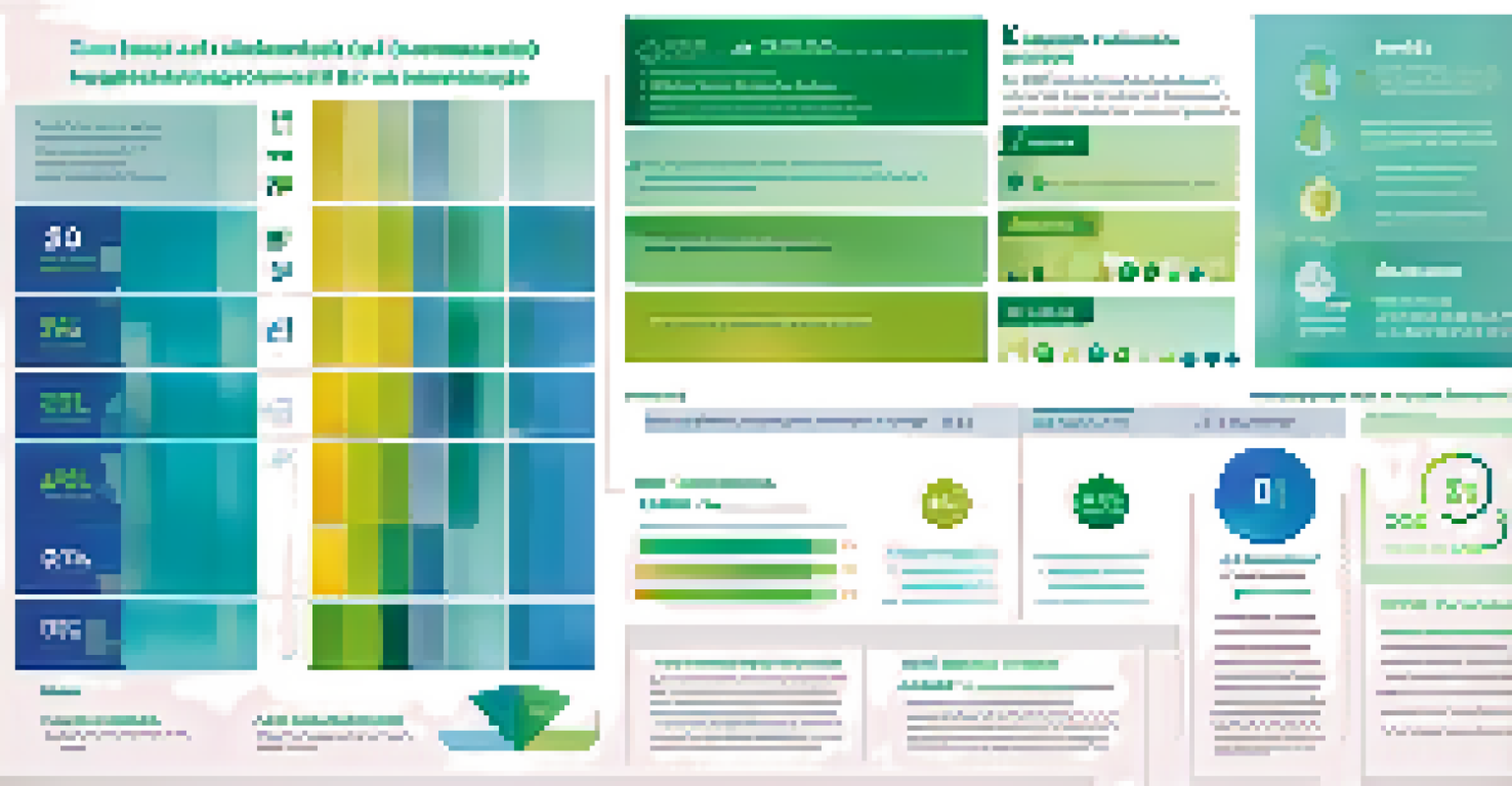Evaluating the Effectiveness of Health Communication Strategies

Understanding Health Communication Strategies
Health communication strategies are essential tools for conveying important health information to the public. These strategies encompass various methods, including campaigns, social media, and community outreach. By understanding their purpose, we can see how they aim to inform, motivate, and influence behaviors related to health.
The single biggest problem in communication is the illusion that it has taken place.
For example, a public health campaign might use social media to spread awareness about vaccination benefits. This approach not only educates but also engages with the audience, fostering a community that values health. Recognizing the components of effective health communication is the first step in evaluating their effectiveness.
Ultimately, these strategies are designed to improve health literacy and empower individuals to make informed decisions. Therefore, assessing their effectiveness is crucial to ensure that the intended messages resonate with the audience and drive positive health outcomes.
Identifying Key Performance Indicators (KPIs)
To evaluate the effectiveness of health communication strategies, it's essential to identify Key Performance Indicators (KPIs). KPIs are measurable values that demonstrate how effectively a campaign is achieving its objectives. For health communication, common KPIs might include engagement rates, reach, and changes in health behaviors.

For instance, if a campaign aims to increase awareness about a specific disease, tracking website visits or social media shares can provide valuable insights. These metrics help determine whether the communication strategy is successful in reaching its target audience. The clearer the KPIs, the easier it becomes to gauge the success of your efforts.
Importance of Audience Feedback
Gathering audience feedback is crucial for tailoring health communication strategies and improving their effectiveness.
Moreover, establishing these indicators upfront allows for real-time adjustments to ensure the strategy remains on track. This proactive approach not only enhances the effectiveness of health communication but also maximizes resource allocation.
Gathering Audience Feedback and Insights
Audience feedback is a vital component in evaluating health communication strategies. By seeking input from the target audience, health communicators can gain insights into how the messages are received and understood. Surveys, focus groups, and social media interactions can serve as effective tools for gathering this feedback.
The art of communication is the language of leadership.
For instance, after a health campaign, conducting a survey asking participants about their awareness and understanding can provide valuable information. This data can reveal gaps in knowledge or misconceptions that need addressing. By listening to the audience, communicators can tailor future strategies more effectively.
Additionally, audience feedback can highlight which channels are most effective for reaching different demographics. Understanding these preferences allows for more targeted and impactful communication in the future.
Analyzing Behavioral Changes Post-Campaign
One of the ultimate goals of health communication strategies is to inspire behavioral change. Evaluating the effectiveness of these strategies involves analyzing whether individuals have adopted healthier behaviors as a result of the campaign. This can be assessed through various methods, including pre-and post-campaign surveys.
For example, if a campaign promotes healthy eating, measuring changes in dietary habits before and after the campaign can indicate its success. Such analysis not only reflects the campaign's impact but also provides critical insights for future initiatives. Understanding what worked and what didn’t can guide more effective strategies moving forward.
Evaluating Behavioral Changes
Analyzing behavioral changes post-campaign helps determine the impact of health communication strategies on promoting healthier choices.
Moreover, tracking behavioral changes over time can help identify long-term impacts of health communication efforts. This ongoing evaluation ensures that strategies remain relevant and effective in promoting public health.
Utilizing Social Media Metrics for Evaluation
In today's digital age, social media is a powerful platform for health communication. Evaluating the effectiveness of communication strategies can heavily rely on social media metrics. Metrics such as likes, shares, comments, and follower growth can provide immediate insights into audience engagement and reach.
For instance, a campaign sharing health tips on Instagram can track engagement through likes and comments. Analyzing these metrics can reveal which types of content resonate most with the audience. This information is invaluable for refining future messaging and improving overall effectiveness.
Furthermore, social media allows for real-time interactions, making it easier to gauge audience sentiment and adjust strategies accordingly. By leveraging these metrics, health communicators can enhance their approach and foster a more engaged and informed community.
Collaborating with Stakeholders for Broader Impact
Collaboration with stakeholders is another important facet of evaluating health communication strategies. Engaging various stakeholders, including healthcare providers, community organizations, and policymakers, can amplify the reach and impact of health messages. Their insights can also provide a diverse perspective on the effectiveness of communication efforts.
For example, a public health department might partner with local schools to assess the effectiveness of a campaign aimed at preventing childhood obesity. By gathering input from teachers and parents, the department can refine its messaging and delivery methods. This collaborative approach ensures that strategies are culturally relevant and contextually appropriate.
Collaboration Enhances Impact
Collaborating with stakeholders amplifies the reach of health messages and ensures they are relevant to the community's needs.
Moreover, involving stakeholders fosters a sense of shared responsibility for community health. This collective effort can lead to more comprehensive evaluations and, in turn, more successful health communication strategies.
Adapting Strategies Based on Evaluation Findings
Evaluating health communication strategies is not just about measuring success; it's also about adapting based on findings. When evaluations reveal areas for improvement, it's crucial to refine strategies accordingly. This adaptability can significantly enhance the effectiveness of future campaigns.
For instance, if data shows that a particular message didn’t resonate with the audience, revisiting the messaging or delivery method is essential. This iterative process ensures that health communication remains relevant and effective in an ever-changing landscape. By embracing feedback and making necessary adjustments, communicators can better meet the needs of their audience.

Additionally, documenting and sharing these adaptations can contribute to the broader field of health communication. Other professionals can learn from your experiences, ultimately advancing the effectiveness of health communication strategies across various contexts.